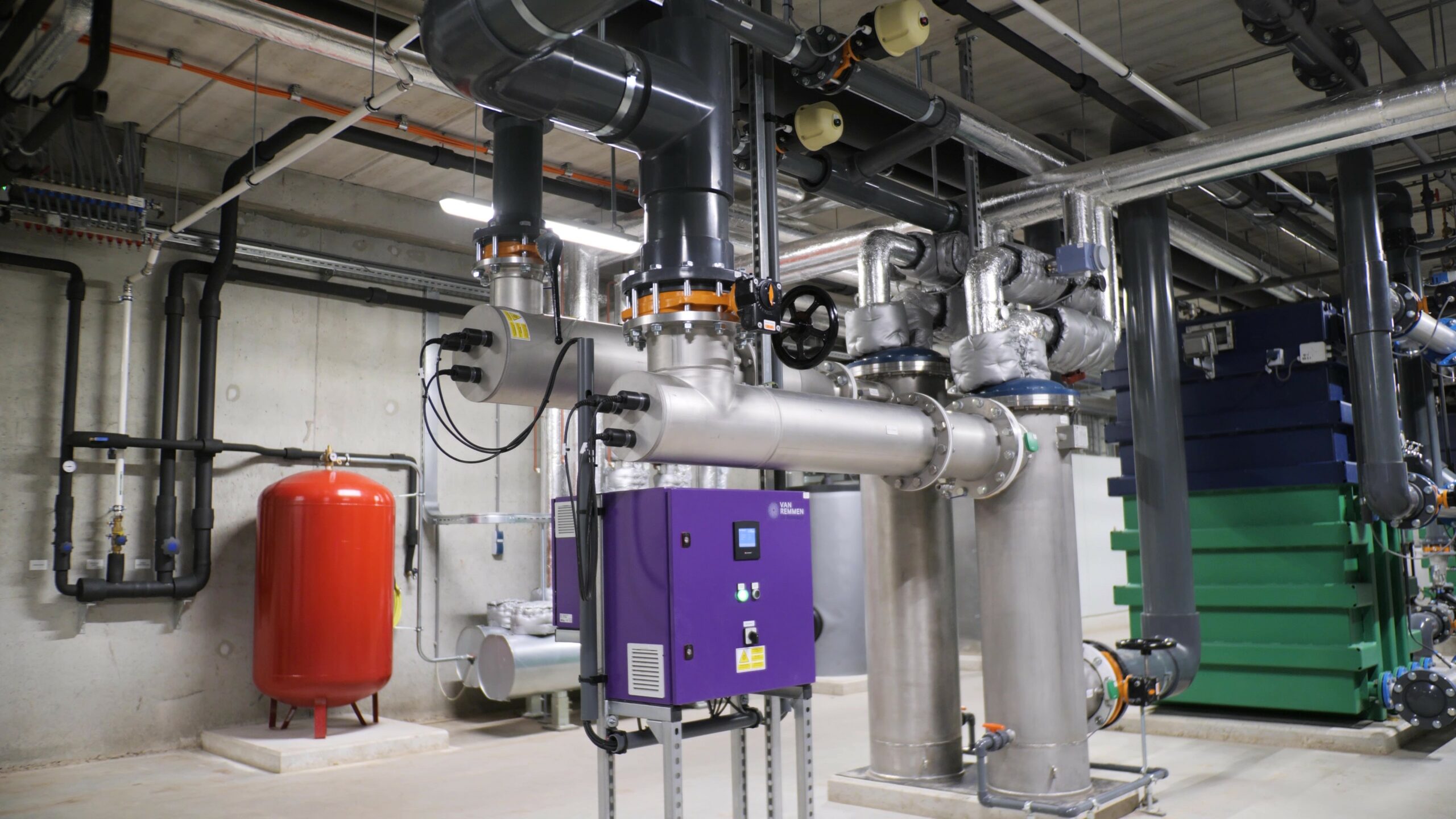Swimming pools are struggling with soaring energy prices and stricter standards for water and air quality. How do you make your pool future-proof without massive investments? UV systems prove to be a successful solution: “If you can save costs and make the pool more enjoyable, you should always do it.”
Challenges
With the Environmental Law coming into effect from January 1, 2024, stricter regulations will be implemented for the swimming pool industry. Bound chlorine levels (GBCs) in the water may not exceed 0.6 mg/liter from that moment on. his requires adding more clean, heated replacement water. However, with soaring energy prices and growing water scarcity, this is not particularly attractive. That is why many swimming pools are searching for an alternative. An alternative that allows you to meet the standard now and in the future, in an affordable and sustainable manner.
The Hague and Leeuwarden
For example, the Hofbad in The Hague faced high bound chlorine levels in their popular swimming pool. “On busy days, we had to flush the water twice a day to keep it safe and comfortable,” says the manager. The Blauwe Golf in Leeuwarden faced similar challenges. “Especially on busy days, we reached our limit values and had to flush extra. At that time, a cubic meter of replacement water cost about €3.50 (now it costs €5,50), so this resulted in significant costs,” explains manager Robert de Linde. “And since we pay for everything with public funds, we scrutinize every euro we spend.”
UV: less bound chlorine and disinfection
In their search for a solution, they turned to Van Remmen UV Technology, a developer of sustainable low-pressure UV systems. “A UV system breaks down bound chlorine using UV-C radiation,” explains director Ton van Remmen. “It also kills bacteria and viruses in the water, including chlorine-resistant bacteria that can cause serious health problems. This reduces your bound chlorine levels and makes the pool water safer without using fresh replacement water. As a result, the pool can conserve valuable water more efficiently and save on the energy required to heat the replacement water.”
The results
The results were immediately noticeable at the pools. At Het Hofbad, the number of flushing cycles decreased from twice a day to once a week, with the same occupancy. At the Blauwe Golf, it led to significant cost savings. “In the first year, we saved 35% of replacement water and 15% of chemicals. This saved us more than €22,000 per year. Since we can further optimize the systems, there is even more profit to be gained.” But what’s actually more important, says De Linde, is that the comfort was also increased. “We want people to enjoy coming here and staying. Our employees are an important gauge of that. They indicated that not only the quality of the pool water but also the air quality had greatly improved.”
Ready for the future
The good results are making UV systems an increasingly popular part of water treatment. The good results are making UV systems an increasingly popular part of water treatment. “It is a simple, sustainable, and cost-effective way to comply with the new legislation and make your pool safer and more comfortable. The investment always pays off within 2 to 3 years, and you are ready for the future.” For Robert de Linde from the Blauwe Golf, the consideration is very simple. “If you can save costs and make the pool more enjoyable, you should always do that.”
